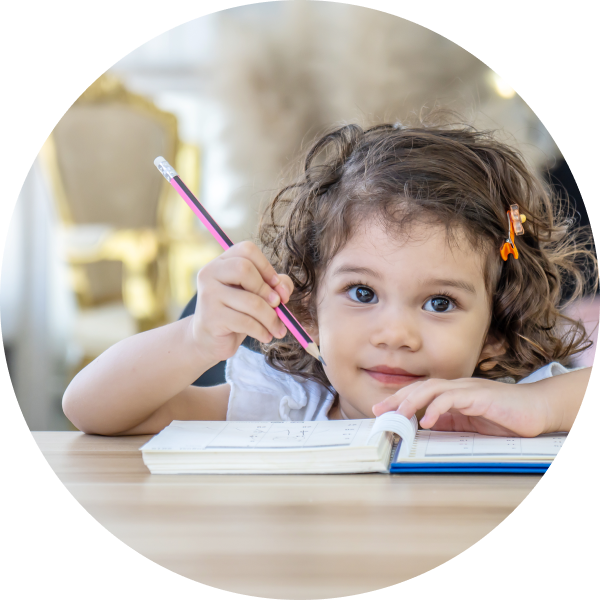


Children don’t always know when something is wrong with their vision. In many cases, they assume that what they see is “normal,” even if it’s blurred, doubled, or incomplete. That’s why regular eye exams are so essential.
Because so much of a child’s growth and education depends on sight, experts estimate that up to 80% of classroom learning is visual, healthy vision allows them to thrive. At Northland Eye Care, we specialize in pediatric eye health, offering gentle, age-appropriate exams that help detect vision problems.



The Canadian Association of Optometrists recommends that children have their first exam between 6–12 months of age to ensure their eyes are developing correctly. Another exam is recommended around age 3, again when they begin school, and then every year thereafter.
For children with additional risk factors — such as premature birth, crossed or lazy eyes, or developmental delays — more frequent exams may be recommended. These regular visits allow our optometrists to monitor growth and catch even subtle vision problems before they become bigger concerns.
Even if your child isn’t talking yet, we can still check their eyes in ways that are simple, comfortable, and non-invasive. For example, we use pupil response testing to see if pupils react properly to light, and fixate-and-follow testing to check if the eyes can focus on and track a moving object. These early milestones are important markers of visual development.
While regular exams are the best safeguard, parents should also watch for everyday signs that may indicate a vision problem. Some of the most common include:
If you notice any of these signs, scheduling an eye exam right away is the best way to ensure your child receives the help they need. Left untreated, vision issues can sometimes be mistaken for behavioural or learning problems.
Vision and learning are closely linked. Research shows that 10% of preschoolers already have a vision deficiency, and that number climbs to 25% between kindergarten and grade 6. Unfortunately, many of these issues go undiagnosed because children assume their vision is “normal.”
Up to 60% of children diagnosed with learning or behavioural disabilities suffer from undetected vision problems. By identifying these issues early, our optometrists can ensure your child gets the proper support, preventing unnecessary struggles both in and out of the classroom.
One of the fastest-growing vision concerns in children is myopia, or nearsightedness. Without early treatment, myopia can progress quickly and increase the risk of severe eye conditions later in life.
At Northland Eye Care, we are proud to offer advanced myopia management with MYAH technology. This cutting-edge tool allows us to measure the growth of the eye with exceptional precision, track changes over time, and design personalized treatment plans to slow progression.
MYAH technology uses a combination of axial length measurement, corneal topography, and pupillometry to create a complete picture of your child’s eye health. With this information, we can predict future risks, intervene early, and provide targeted care that helps preserve healthy vision well into adulthood.
At Northland Eye Care, located next to Northland Mall, we combine pediatric expertise with advanced technology to protect your child’s vision. Healthy eyes are key to a bright future. Book your child’s eye exam today and give them the clear vision they need to learn, grow, and succeed.